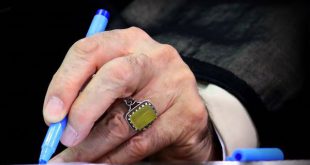According to the study woman who observes the hijab should be happier than a woman who decides not to.
Throughout history philosophers have pondered upon the factors behind happiness and tranquility. Some philosophers, such as Buddha and the Greek cynical philosopher Diogenes, believed that happiness stems from within; that happiness is a result of a freedom from pain and suffering by discarding the external world. This is contrary to Islamic ideology, but still has crept its way into some Islamic practices, such as the asceticism found in Sufism. Another group of philosophers believe that happiness is found in the external world. This means that when one possesses that which he desires he becomes happy.
Islamic ideology holds that happiness is found somewhere in the middle. That both internal and external factors play a part in happiness. Furthermore, it considers the internal spiritual joys to be more effective in overall happiness. (Mutahhari, 1982) Islam holds that happiness is achieved through controlling one’s rational desires and increasing faith, piety, kindness, and sincerity. (Ansariyan, 2004)
Therefore, using hijab as an example, a woman who observes the hijab should be happier than a woman who decides not to. Furthermore, a woman who observes correct hijab, for instance wears loose-fitting clothes, would be happier than one who wears the hijab incorrectly, for instance wearing tight clothes. Shaykh Zaid Alsalami (2016) has an excellent video demonstrating proper and improper hijab styles.
Eaton (2015) decided to test this hypothesis and see whether Muslim women who observe proper hijab, improper hijab, and no hijab differ in their levels of depression, anxiety, and self esteem. They theorised that wearing the hijab would help a Muslim woman form an identity and would increase the amount of social support she benefits from, thus increasing psychological wellbeing.
There are a number of studies which support this hypothesis. For example Jasperse et al. (2012) found that women who observe the hijab report higher levels of life satisfaction and present with fewer symptoms of psychological distress. Furthermore, Swami et al. (2014) reported that women who observe the hijab reported a more positive body image.
Eaton (2015) examined 50 young Muslim women in the United States of various nationalities and immigration statuses. They were divided into three groups, those who did not observe hijab, those who observed hijab, and those who observed hijab with loose-fitting clothing. The participants then filled out depression, anxiety, and self-esteem scales.
He found that women who observe the hijab, wear loose-fitted clothing, and have higher levels of religiosity report lower levels of anxiety and depression. They concluded that wearing loose-fitted clothing is a protective factor against anxious and depressive symptoms.
Source:14publications
 Ijtihad Network Being Wise and Faithful Muslim in the Contemporary World
Ijtihad Network Being Wise and Faithful Muslim in the Contemporary World
